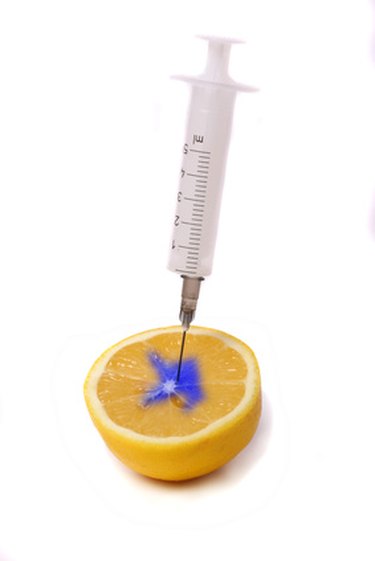
A fruit is considered inedible if it is difficult to consume because it's too hard or if it's poisonous to humans. Many plants that bear inedible fruits are shrubs, such as the yew shrub, an evergreen that grows poisonous red berries, or vines, such as the American bittersweet, a plant with diarrhea-inducing orange berries. Some inedible fruit, however, grows on trees.
Holly
Video of the Day
While most holly plants remain shrubs, some grow large enough to be considered trees. Hard, brightly colored red berries grow among the holly tree's pointed, stiff leaves. You should never consume holly berries because they cause a host of intestinal problems, including vomiting, diarrhea and general, prolonged nausea. The berries can also cause feelings of drowsiness.
Video of the Day
Suicide Tree
The aptly named suicide tree goes by the name Cerbera odollam in the scientific community. This plant also sometimes is labeled a shrub, but often grows large enough, up to 30 feet tall, to be considered a tree. The suicide tree produces a small, round, mango-like fruit that contains toxin-laced seeds that disrupt the heartbeat, causing death. According to an article published online by "New Scientist," this fruit's poisons were used in at least 500 murders, suicides and accidental deaths between 1989 and 1999.
Osage Orange Tree
Also known as a hedge or hedge apple tree, the Osage orange tree's scientific name is Maclura pomifera. The females of this tree species produce a large, round, orange fruit that can grow up to six inches in diameter. The actual meat of this tree's fruit is too bitter, stringy and tough to eat, but the seeds contained inside it are perfectly edible, as long as you completely remove their husks.
Soapberry Tree
The soapberry tree, also known as Spindus saponaria, may not have edible fruits, but they are very useful nonetheless. This tree's fragrant white flowers bloom at the end of spring and bear small, ½-inch circumference fruit that is first translucent amber and yellow, then brown-black. The hard, brownish-black fruit creates a lather when added to water, making it a natural soap ingredient.
Snowdrop Tree
The snowdrop tree grows dainty, drooping white flowers that typically bloom in May. The tree's fruit appears much later in the year, during the autumn months. The snowdrop tree's fruit has a four-winged, oval shape, and starts out green, gradually turning light brown. This small, hard, inedible fruit usually doesn't grow larger than 1½ inches in circumference.